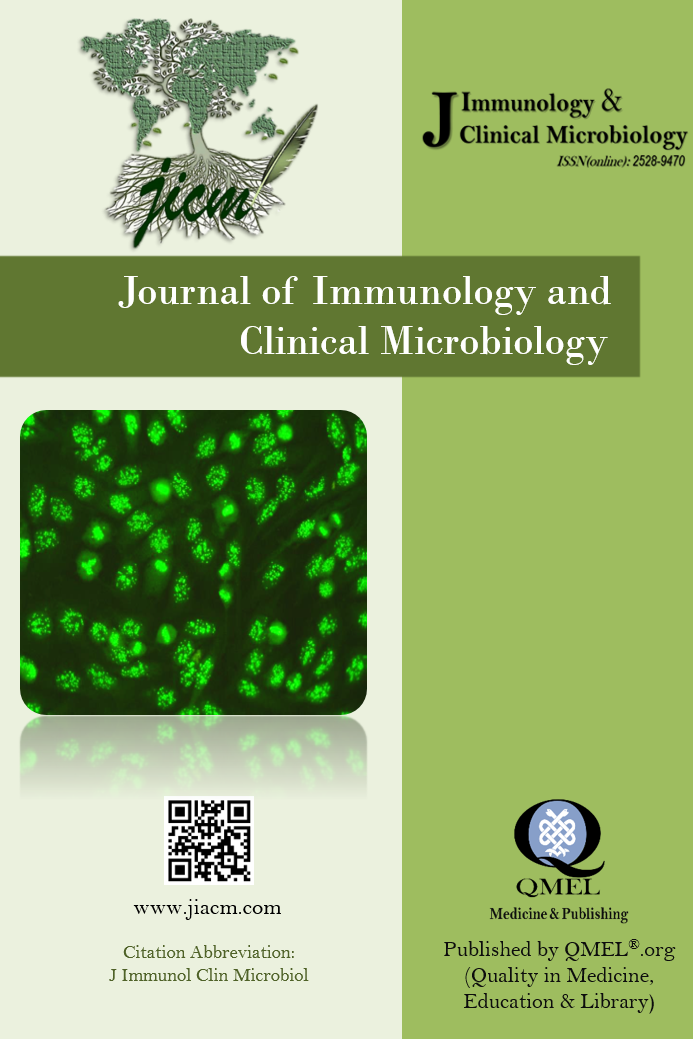Peripheral Facial Paralysis After COVID-19 Vaccination
Peripheral Facial Paralysis After COVID-19 Vaccination
facial paralysis, covid vaccination,
___
- Referans 1-Jowett N (2018) A general approach to facial palsy. Otolaryngol Clin North Am 51:1019–1031.
- Referans2-Mattox DE. Clinical disorders of the facial nerve. In: Flint PW, HaugheyBH, Lund VJ, Niparko JK, Richardson MA, Robbins KT, et al.,editors. Cummings Otolaryngology: Head&Neck Surgery. 6th ed. Philadelphia, PA: Elsevier Science Health Science;2014. p.2617-28
- Referans3-Rath B,Gidudu JF, Anyoti H et al. Facial nerve palsy including Bells' palsy: case definitions and guidelines for collection, analysis and presentation of immunisation safety data. Vaccine 2017;35:1972-83
- Referans4- Haber P, De Stefano F, Angulo FJ, Iskander J, Shadomy SV, WeintraubE, Chen RT. Guillain–Barré syndrome following influenza vaccination. JAMA. 2004;292(20):2478–81.
- Referans5-Kelkar P. Chronic inflammatory demyelinating polyneuropathy(CIDP) with rapid progression after influenza vaccination: a report of three cases. J Clin Neuromuscul Dis. 2006;8:20–5.
- Referans6- Alcalde-Cabero E, Almazán-Isla J, García López FJ, et al. Guillain-Barré syndrome following the 2009 pandemic monovalent and seasonal trivalent influenza vaccination campaigns in Spain from 2009 to 2011: outcomes from active surveillance by a neurologist network, and records from a country-wide hospital discharge database. BMC Neurol. 2016;16:75.
- Referans7-Chang KH, Lyu RK, Lin WT, Huang YT, Lin HS, Chang SH. Gulllain–Barre syndrome afte rtrivalent influenza vaccination in adults. Front Neurol. 2019;10:768
- Referans8-Nicola Cirillo Reported orofacial adverse effects of COVID-19vaccines: The knowns and the unknowns J Oral Pathol Med. 2021;00:1–4.
- Referans9-Asaf S, Eran P, Idan H Peripheral facial nerve palsy following BNT162B2(COVID-19) vaccination IIMAJ 2021;23: 143-144
- Referans10-House JW, Brackmann DE (1985) Facial nerve grading system Otolaryngol Head Neck Surg 93:146–147.)
- Referans11- ZhangW,Xu L, LuoT,Wu F, Zhao B, LiX (2020) The etiology of Bell’s palsy: a review. J Neurol 267:1896–1905.
- Referans12- Nunes Duarte-Neto A, de Almeida Monteiro RA, da Silva LFF et al (2020) Pulmonary and systemic involvement of COVID-19 assessed by ultrasound-guided minimally invasive autopsy. Histopathology. 77:186–197.
- Referans13-Murdin A. D.,Barreto L., Plotkin S., Inactivated poliovirus vaccine: Past and present experience. Vaccine 14, 735–746 (1996).
- Referans14-Vellozzi C.,Burwen D. R., Dobardzic A., Ball R., Walton K., Haber P., Safety of trivalent inactivated influenza vaccines in adults: Background fo rpandemic influenza vaccine safety monitoring. Vaccine 27, 2114–2120 (2009).
- Referans15-Agmon-Levin N, Kivity S, Shoenfeld Y. Influenza vaccine and autoimmunity IMAJ 2009;11(3): 183-5
- Referans16- Zhang Y, Zeng G, Pan H, et al. Safety, tolerability, and immunogenicity of an inactivated SARS-CoV-2 vaccine in healthy adults aged 18-59 years: a randomised, double-blind, placebo controlled, phase 1/2 clinical trial. Lancet Infect Dis. 2020; 21(2):181-192
- Referans17-Avcı H, Karabulut B, Eken HD, Faraşoğlu A, Çakil T, Çoruk S, Özel H, Kaya NK, Özbalta SÖ. Otolaryngology-Specific Symptoms May Be Highly Observed in Patients With a History of Covid-19 Infection After Inactivated Coronavirus Vaccination. Ear Nose Throat J. 2021 Jul 8
- Referans 18-Lu L, Xiong W, Mu J, et al. The potential neurological effect of the COVID-19 vaccines: A review. Acta Neurol Scand. 2021;144(1):3-12.
- Referans19-Shin MD, Shukla S, Chung YH, et al. COVID‐19 vaccine development and a potential nanomaterial path forward. Nat Nanotechnol. 2020;15(8):646‐655.
- Referans20--. Pasquale A, Preiss S, Silva F, Garçon N. Vaccine Adjuvants: from 1920 to 2015 and Beyond. Vaccines. 2015;3(2):320‐343.
- Yayın Aralığı: Yılda 4 Sayı
- Başlangıç: 2016
- Yayıncı: Erkan YULA
Kısa Barsak Sendromunda Mikrobiyota ve Pre-Probiyotikler
Eftal GEÇGİL DEMİR, Fatma Bengü KUYULU BOZDOĞAN, Aybala TAZEOĞLU
Ahmet DOĞAN, Hatun ÖZTÜRK ÇERİK, Atila GÜRGEN, Aykut ÖZTURAN
Zeynep TANRIVERDİ, Onur YİĞİTASLAN, Salih Atakan NEMLİ, Süreyya GÜL YURTSEVER, Esra BASKURT, Hatice TÜRE, Mehmet ÇELEBİSOY
Evaluation on the correlation between gender and drug allergy agent and its incidence frequency
İzzet FİDANCI, Mert SATILMIŞ, Duygu AYHAN BAŞER, Hilal AKSOY, Duygu YENGİL TACİ, Mustafa CANKURTARAN
COVID-19 Hastalarında İmmunokromatografik Antikor Testi Sonuçları
Peripheral Facial Paralysis After COVID-19 Vaccination
The effects of balneotherapy on depression and anxiety scale scores in patients with osteoarthritis
